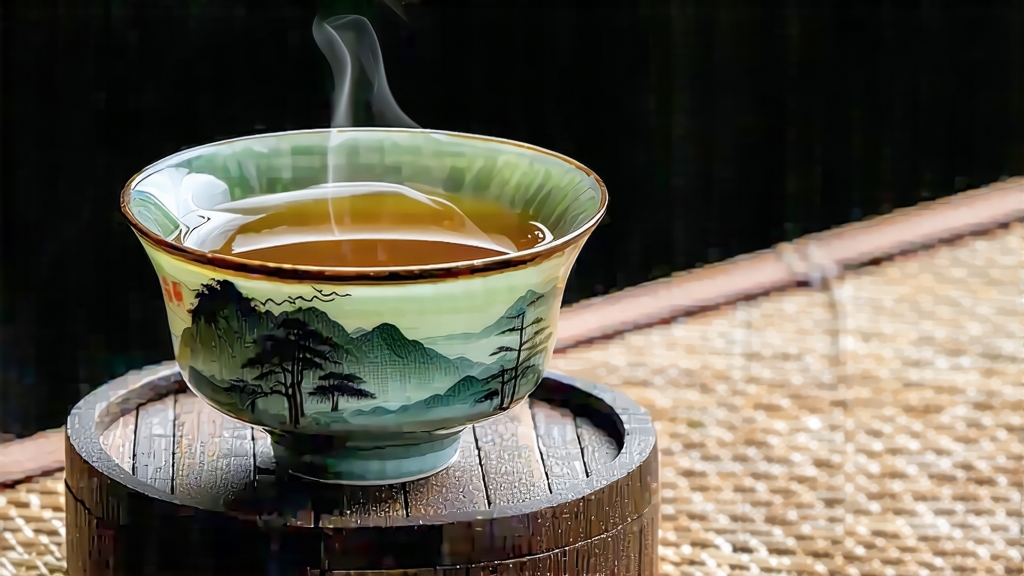
Rising like an emerald island above the Tropic of Cancer, Taiwan’s Alishan mountain range is more than a scenic wonder; it is the cradle of one of the most fragrant oolongs ever cupped. Alishan High-Mountain Oolong—often simply called “Alishan Qing Xiang”—belongs to the lightly oxidized, minimally roasted branch of the oolong family, yet it carries the full genetic memory of Fujian’s Wuyi and Anxi traditions that crossed the strait with migrants three centuries ago. Today international judges praise its “orchid milk aroma” and “green jade spine,” while local farmers speak of it as “the breath of the forest at dawn.” To understand this tea is to hike through cloud belts, listen to bamboo creak in midnight wind, and watch leaves dance in a gaiwan like green butterflies.
History: From Fujian Cuttings to Cloud Forest
In 1788, the Qing court lifted maritime bans and allowed Han settlers to sail east. Among their most precious cargo were softwood cuttings of the Qing Xin (or “green heart”) cultivar, a bush famous in Anxi for producing Tie Guan Yin’s floral perfume. The immigrants climbed past 1,000 m until daytime clouds brushed their shoulders; there they discovered red, well-drained lateritic soil and a diurnal swing of 10 °C—conditions that slow leaf growth and concentrate aromatics. By 1865 Alishan tea was bartered for salt and indigo, and under Japanese colonial rule (1895-1945) the region’s oolong won awards in Manila and Kyoto. After Taiwan’s 1979 “High-Mountain Tea Development Program,” farmers pushed plantings above 1,400 m, turning Alishan into a flagship origin whose name now appears on menus from Paris to Perth.
Terroir: Where Clouds Become Flavor
Alishan’s core gardens sit between 1,200 and 1,600 m in Chiayi County. At these altitudes, ultraviolet intensity increases 15 % for every 300 m, prompting leaves to synthesize more catechins and aromatic oils as natural sunscreen. Morning fog filters sunlight into a soft, diffused glow, lengthening the time needed to reach full photosynthesis; the result is thinner cell walls and a higher amino-acid ratio, gifting the liquor its signature sweetness. Night temperatures can drop to 12 °C even in July, so the bush never rests completely, accumulating fructose and glutamic acid that translate into a creamy mouthfeel. Finally, the porous, iron-rich soil drains quickly, forcing roots to dive deep for minerals that tighten the leaf’s structure and allow dozens of infusions without collapse.
Cultivar: The Loyal Qing Xin
While Jin Xuan (milk oolong) and Cui Yu (jade oolong) are planted lower down, the classic Alishan profile relies almost exclusively on Qing Xin. Its small, oval leaves are serrated like tiny pinking shears and resist pests at altitude. Qing Xin is slow-growing—spring buds break two weeks later than bushes at sea level—yet it yields an unusually high ratio of geraniol and linalool, the same terpenes that give lavender and bergamot their perfume. Attempts to transplant Qing Xin to Hawaii or Kenya have succeeded agronomically but failed aromatically; the bush seems to need Taiwan’s monsoon rhythm and diurnal heartbeat to speak its native floral language.
Harvest Calendar: Five Seasons in One Year
Alishan farmers recognize five picking seasons, not four. The “winter-picking” (late October) is most coveted: after the Mid-Autumn rains, growth stalls, sugars condense, and the leaf’s fragrance becomes crystalline. Spring (April) offers volume and balance, while summer (June) and autumn (September) are usually blended or roasted for milk-tea base. A tiny “spring tail” harvest in early May—when cicadas begin to sing—produces a fleeting micro-lot prized by Tokyo tea bars for its magnolia note.
Craft: The Living Choreography of Qing Xiang
Unlike the heavy charcoal roasting applied to Dong Ding oolong, Alishan is processed in the “qing xiang” (light fragrance) style that foregrounds terroir over craftsman smoke. The dance begins at dawn: pickers pluck the top three leaves and the semi-open bud, placing them in airy bamboo baskets to prevent bruising. By 10 a.m. the leaves are spread 3 cm thick on reed trays under the mountain sun for 20–